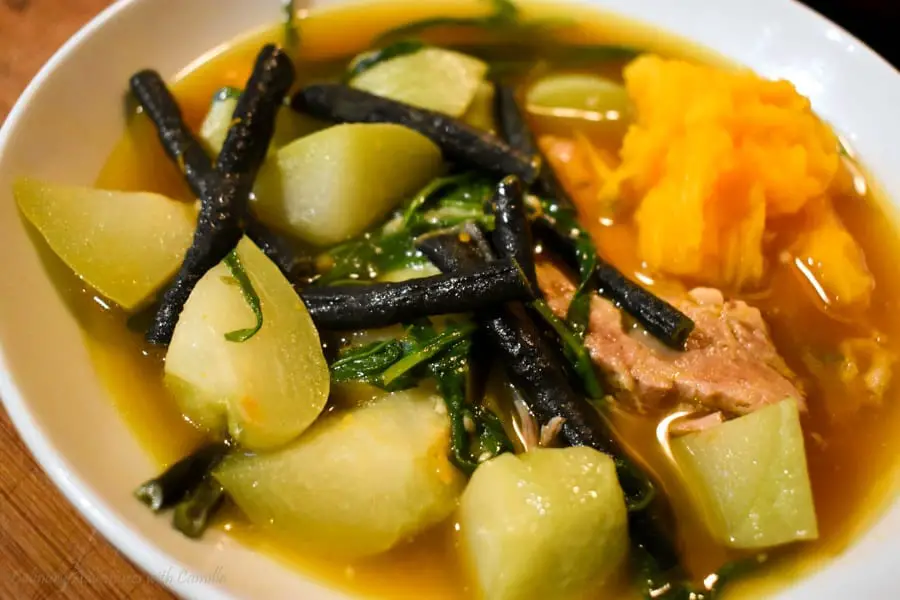Relish Traditional Filipino Flavors With Easy-To-Follow Recipes
Checking out typical Filipino cuisine provides a distinct chance to involve with an abundant tapestry of flavors and cultural narratives. As we explore these cooking practices, one might wonder exactly how to finest bring the heat of Filipino friendliness to their own dining table.

Review of Filipino Food
Exploring the vivid tapestry of Filipino cuisine exposes a rich cultural heritage influenced by different historical and geographical factors. The Philippines, an archipelago of over 7,000 islands, boasts a diverse array of flavors and food preparation methods. The country's culinary landscape is formed by aboriginal customs and the impacts of emigration, trade, and movement. Therefore, Filipino cuisine is an unique mix of Malay, Spanish, Chinese, and American aspects.
Rice functions as the keystone of Filipino meals, usually accompanied by a variety of veggies, meats, and fish and shellfish. Making use of bold tastes is a trademark of the cuisine, with ingredients such as garlic, onions, ginger, and soy sauce playing pivotal roles. The emphasis on common dining reflects the Filipino culture of friendliness and household connections.
Street food likewise plays a substantial duty in the culinary scene, showcasing regional components and imaginative food preparation approaches. As the Philippines remains to welcome globalization, the combination of conventional and modern influences can be seen in modern Filipino dishes, further enriching its culinary identification. Filipino food recipes. On the whole, Filipino cuisine is a testimony to the nation's history, society, and dynamic spirit
Must-Try Standard Meals
Filipino food is finest experienced through its typical meals, each offering an unique insight right into the country's diverse cooking heritage. Among the must-try dishes is Adobo, a savory stew usually made with hen or pork, seasoned in vinegar, soy sauce, and garlic before being slow-cooked to perfection. Its abundant and appetizing taste profile represents the heart of Filipino convenience food.
An additional famous meal is Sinigang, a sour soup frequently prepared with tamarind, tomatoes, and numerous veggies. This recipe can include pork, shrimp, or fish, and is cherished for its refreshing taste and warming high qualities.
Lechon, a whole roasted pig, is a centerpiece at Filipino celebrations, understood for its crunchy skin and tender meat. It symbolizes the festive spirit of Filipino gatherings.
For those food craving something pleasant, Halo-Halo is a fascinating dessert integrating crushed ice, sweetened fruits, jellies, and covered with leche flan and purple yam.
Each of these standard meals envelops the essence of Filipino society, welcoming anybody to savor the dynamic tastes and abundant history that define the island chain's culinary landscape.
Step-by-Step Recipes
Food preparation genuine Filipino meals in your home can be an enhancing experience that brings the vibrant flavors of the Philippines right into your cooking area. With a huge selection of conventional meals to pick from, using detailed dishes best site permits both amateur and skilled cooks to understand the techniques and flavors essential to Filipino cuisine.
Begin by picking a recipe that intrigues you, such as adobo, sinigang, or lumpia. Each dish frequently consists of a comprehensive component listing complied with by clear guidelines, directing you via the food preparation process. Begin with prep work, which might include marinating proteins, chopping vegetables, or determining seasonings. This fundamental step ensures a smooth food preparation experience.
As you progress, pay attention to food preparation strategies unique to Filipino cuisine, such as sautéing (ginisa) or stewing (nilaga) These methods can significantly enhance the deepness of taste in your meals. Timing is crucial; follow the recommended food preparation times to accomplish the perfect structure and preference.
Essential Ingredients and Tips
Regularly, the trick to understanding Filipino food depends on understanding and using necessary active ingredients that specify its unique flavors. Central to lots of recipes are staples like soy sauce, vinegar, garlic, and ginger, which add to the distinct balance of savory, sour, and wonderful notes. Soy sauce works as a base for marinades and sauces, while vinegar, specifically walking cane vinegar or coconut vinegar, passes on a zesty illumination that is important in recipes like adobo.
Rice is an essential element of Filipino meals, often offered together with main dishes to take in savory sauces. For a touch of authenticity, choose jasmine or long-grain rice. Furthermore, utilizing fresh fruit and vegetables such as tomatoes, environment-friendly beans, and eggplants enhances the meal's vibrancy and nutritional worth.
Do not overlook the relevance of natural herbs and seasonings, such as bay leaves, lemongrass, and chili peppers, which boost the taste profile. When food preparation, keep in mind that patience is key-- allowing active ingredients to blend with each other results in richer tastes. Embrace the method of tasting as you go; hop over to here this will certainly allow you to adjust seasonings and attain the excellent equilibrium that characterizes Filipino food.
Serving and Enjoying Filipino Dishes
Comprehending the subtleties of Filipino cuisine expands past prep work and components; it incorporates the method dishes are offered and taken pleasure in. The Filipino dining experience is defined by communal sharing, promoting a feeling of togetherness and event. Typically, meals exist in huge portions, enabling diners to take part in a range of tastes.
Rice, a staple in Filipino meals, is commonly functioned as the foundation whereupon the various other dishes rest. Coming with viands, such as adobo, sinigang, or lechon, are put in the facility of the table, welcoming guests to serve themselves. Filipino food recipes. This method not just cultivates a relaxed environment yet likewise motivates discussions and links amongst restaurants

Conclusion
In conclusion, traditional Filipino cuisine supplies a rich tapestry of tastes and cultural significance, inviting expedition via its varied recipes. The easy-to-follow recipes supplied promote the prep work of iconic dishes, fostering a deeper admiration for the active ingredients and strategies involved. Emphasizing communal eating, these culinary methods reinforce family ties and advertise the heat of Filipino hospitality. Engaging with this vivid cuisine not only enriches the eating experience but also maintains and celebrates the heritage of the Filipino people.